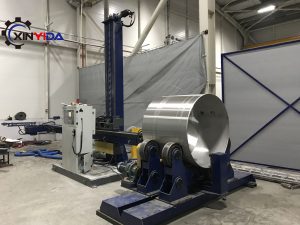Tank polishing is a vital process for industries such as food and beverage, pharmaceuticals, and chemicals. This procedure ensures that tanks are clean, smooth, and free from contaminants, which is essential for product quality and hygiene. While traditional manual polishing has been the standard for years, automation in tank polishing is quickly becoming the preferred method. In this article, we will explore the key benefits of automation in tank polishing and why it’s better than manual methods.
Enhanced Efficiency with Automated Tank Polishing
One of the primary advantages of automation in tank polishing is increased efficiency. Manual polishing often requires a skilled workforce, which can lead to longer processing times and potential errors due to fatigue or inconsistency. Automated systems, on the other hand, can polish tanks continuously, without breaks, and at a faster pace.
Automation drastically reduces the time needed for each polishing job, allowing industries to meet higher production demands and cut down on downtime. Faster polishing speeds result in increased throughput and a quicker turnaround for tank maintenance, ultimately improving overall productivity.
Consistency and Precision in Polishing Results
Consistency and precision are crucial in tank polishing, especially for industries that require strict hygiene and surface standards. Manual polishing can suffer from human error, leading to inconsistent finishes and uneven surfaces. Automated systems are programmed to deliver precise results every time, ensuring an even surface and high-quality finish.
These automated polishing systems are designed with sensors and control mechanisms that maintain uniform pressure, speed, and movement. This ensures that each tank is polished to meet exact specifications, reducing the risk of defects or contamination.
Cost Savings in the Long-Term with Automation
While initial investments in automated polishing systems may seem high, the long-term cost savings are significant. Automation reduces the need for extensive manual labor, thereby lowering labor costs over time. Additionally, automated systems operate faster, which means that more tanks can be polished in less time.
Furthermore, automated polishing reduces the chances of errors and defects, leading to fewer product reworks and reduced material wastage. This overall efficiency in the polishing process translates into substantial cost savings and higher profitability for businesses.
Improved Worker Safety and Reduced Labor Intensity
Manual polishing is a physically demanding task that can lead to fatigue, strain, and repetitive motion injuries. Workers often have to stand for extended periods and apply considerable force during polishing, which can result in accidents or injuries.
Automation significantly reduces physical strain on workers, improving overall workplace safety. With machines handling the bulk of the polishing work, employees can focus on monitoring and adjusting the system, thus reducing the risk of fatigue and injuries.
Environmental Sustainability with Automated Systems
Environmental sustainability is becoming increasingly important for modern industries. Automated polishing systems are designed to be energy-efficient, consuming less power than traditional manual methods. Additionally, automated systems use materials like abrasives more efficiently, reducing waste and excess consumption.
By minimizing the use of chemicals and solvents in polishing, automation helps reduce the environmental impact of tank polishing processes, making it a greener alternative to manual methods. This aligns with corporate sustainability goals and helps companies meet environmental regulations.
Customization and Adaptability to Different Tank Sizes
Adaptability is another key benefit of automated tank polishing systems. Different industries require polishing for tanks of various sizes and materials, and automation allows for easy customization of polishing parameters. Automated systems can adjust the polishing pressure, speed, and abrasiveness to suit different tank types.
This adaptability is especially beneficial for industries that deal with a wide variety of tank designs, ensuring that automated polishing can be tailored to meet the needs of each specific application.
Ensuring Compliance with Industry Standards
In highly regulated industries like pharmaceuticals, food processing, and chemicals, tank polishing must meet strict cleanliness and hygiene standards. Automated polishing systems are designed to ensure precise finishes that meet industry-specific regulatory requirements, such as FDA standards for food safety or GMP standards in the pharmaceutical industry.
By implementing automated tank polishing, businesses can more easily comply with these regulations, reducing the risk of non-compliance and potential penalties.
Maximizing ROI with Automation
Investing in automated polishing systems can deliver a high return on investment (ROI) by enhancing efficiency, reducing labor costs, and ensuring consistent quality. The speed and accuracy of automated systems contribute to higher throughput, leading to more polished tanks in less time.
Moreover, automated systems require less maintenance and have longer operational lifespans, offering long-term cost-effectiveness for businesses that choose automation over traditional manual polishing.
The Future of Tank Polishing is Automated
The benefits of automation in tank polishing are undeniable. From increased efficiency and precision to cost savings and improved worker safety, automation offers a clear advantage over manual polishing methods. As industries continue to evolve, adopting automated systems will be essential for maintaining high standards of quality, compliance, and sustainability.
Incorporating automated polishing technology enables businesses to meet growing demand while maintaining superior product quality. Whether you’re in the food industry, chemicals, or pharmaceuticals, automating the tank polishing process is a smart investment that will help your business thrive in an increasingly competitive market.


